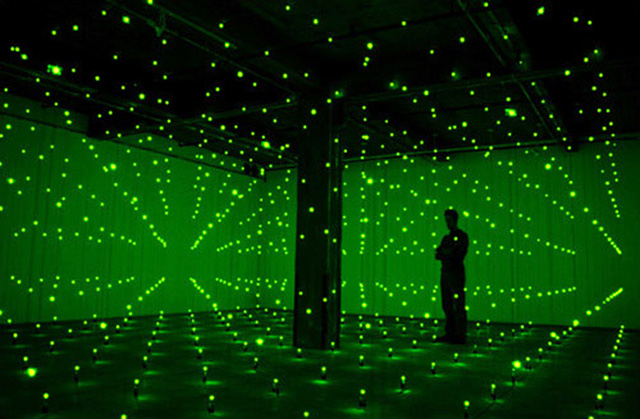Are you telling me that 200 of our men against your boy is a no-win situation for us?




…being green really is tough, so tough that the color itself fails dismally. The cruel truth is that most forms of the color green, the most powerful symbol of sustainable design, aren’t ecologically responsible, and can be damaging to the environment.
“Ironic, isn’t it?” said Michael Braungart, the German chemist who co-wrote “Cradle to Cradle,” the best-selling sustainable design book, and co-founded the U.S. design consultancy McDonough Braungart Design Chemistry. “The color green can never be green, because of the way it is made. It’s impossible to dye plastic green or to print green ink on paper without contaminating them.”
This means that green-colored plastic and paper cannot be recycled or composted safely, because they could contaminate everything else. The crux of the problem is that green is such a difficult color to manufacture that toxic substances are often used to stabilize it.
Take Pigment Green 7, the commonest shade of green used in plastics and paper. It is an organic pigment but contains chlorine, some forms of which can cause cancer and birth defects. Another popular shade, Pigment Green 36, includes potentially hazardous bromide atoms as well as chlorine; while inorganic Pigment Green 50 is a noxious cocktail of cobalt, titanium, nickel and zinc oxide.
If you look at the history of green, it has always been troublesome. Revered in Islamic culture for evoking the greenery of paradise, it has played an accident-prone role in Western art history. From the Italian Renaissance to 18th-century Romanticism, artists struggled over the centuries to mix precise shades of green paint, and to reproduce them accurately. (…)
Green even has a toxic history. Some early green paints were so corrosive that they burnt into canvas, paper and wood. Many popular 18th- and 19th-century green wallpapers and paints were made with arsenic, sometimes with fatal consequences. One of those paints, Scheele’s Green, invented in Sweden in the 1770s, is thought by some historians to have killed Napoleon Bonaparte in 1821, when lethal arsenic fumes were released from the rotting green and gold wallpaper in his damp cell on the island of Saint Helena.
images { Erwin Redl, Matrix II, 2000 | light-emitting diode installation }


